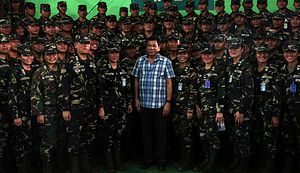This week, the Philippines made headlines with its purchase of new attack helicopters. Though finalization of the deal, which had long been mulled, signals the country’s willingness to advance its military modernization and boost its counterinsurgency capabilities as it deals with a range of internal security threats, it also leaves several broader questions unanswered.
Despite some significant investments over the past few years, the Armed Forces of the Philippines (AFP) remains one of the weakest militaries in the Asia-Pacific. That includes the Philippine Air Force (PAF), as was evidenced with the heavy use of helicopters and other equipment as well as much-needed assistance from partners following the siege by Islamic State-backed militants in the southern city of Marawi (See: “Where is the Philippines’ Air Force Modernization Under Duterte?“).
As part of an ongoing effort to modernize the Philippine military, since last year defense officials have been signaling that the country would seek to invest more in helicopters, with the country’s aging capabilities as well as the greater emphasis on boosting counterinsurgency-related equipment following the Marawi crisis (See: “ASEAN’s Post-Marawi Islamic State Challenge”). The acquisition of attack helicopters was thus one of the key items expected under the so-called Second Horizon of the country’s military modernization program, which runs from 2018 out to 2022.
On February 6, the deal was officially finalized and announced at the Singapore Airshow, with 16 Bell 412EPI helicopters purchased by the DND through a government-to-government contract with the Canadian Commercial Cooperation (CCC). The deal had been in the works for a while, and came as little surprise given both the fact that the PAF has long operated variants of Bell helicopters dating back to the 1950s and the options that the Philippine government had been considering.
The helicopters can be used for a variety of missions, including disaster relief, search and rescue, passenger transport, and utility transport. And they will no doubt be touted as useful in the context of current efforts by the Philippine government to address a series of internal threats, including terrorism as well as battles with Islamic and leftist rebels at home.
Yet beyond the deal itself, key questions remain unresolved about the future direction of Philippine military modernization, as I have observed before (See: “What’s Next For Philippine Military Modernization Under Duterte?”). These include the extent to which the government will prioritize internal vs. external security threats as well as the degree to which old problems – ranging from maintenance of existing equipment to corruption – can be effectively addressed during Duterte’s leadership.
































